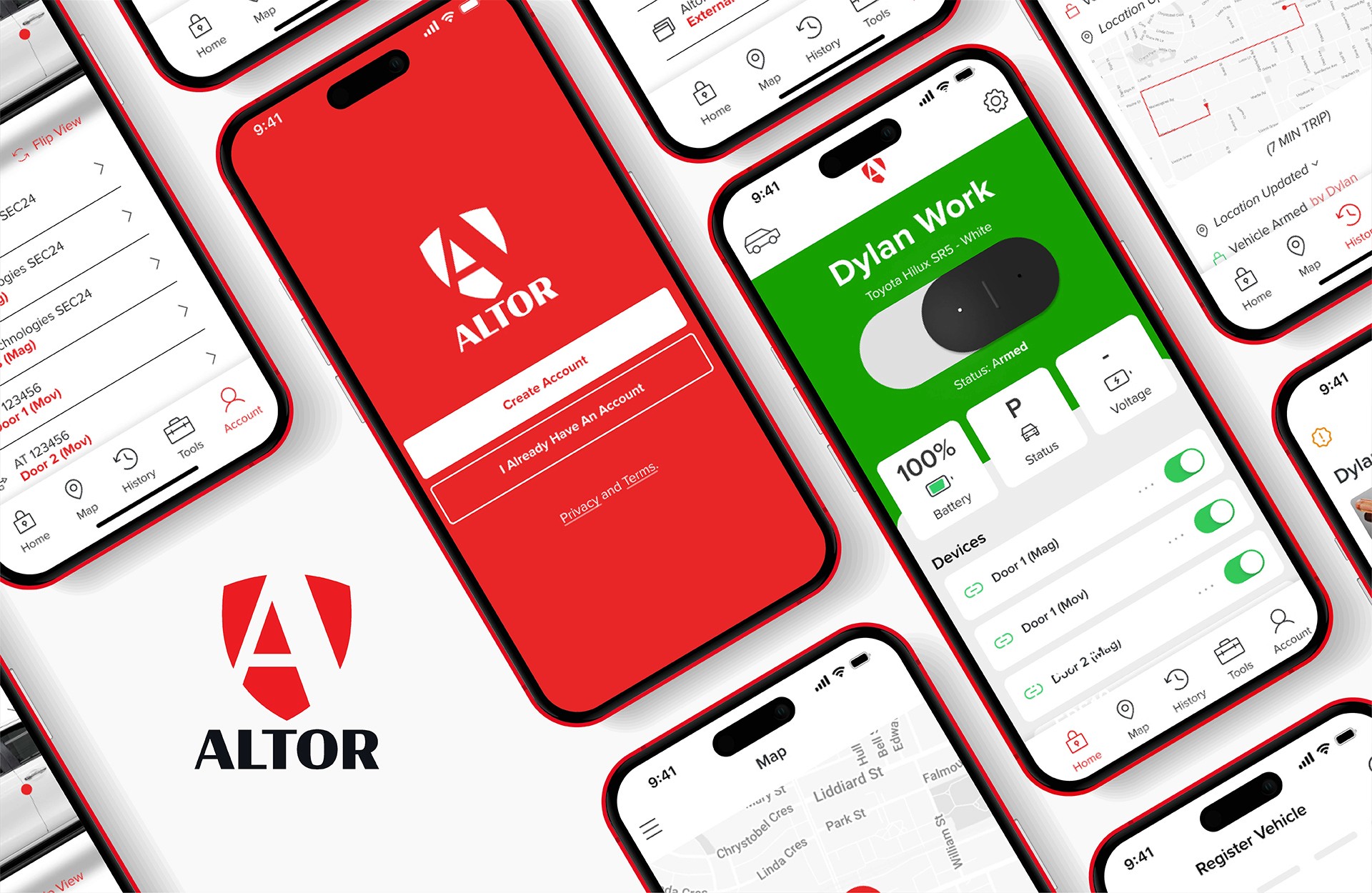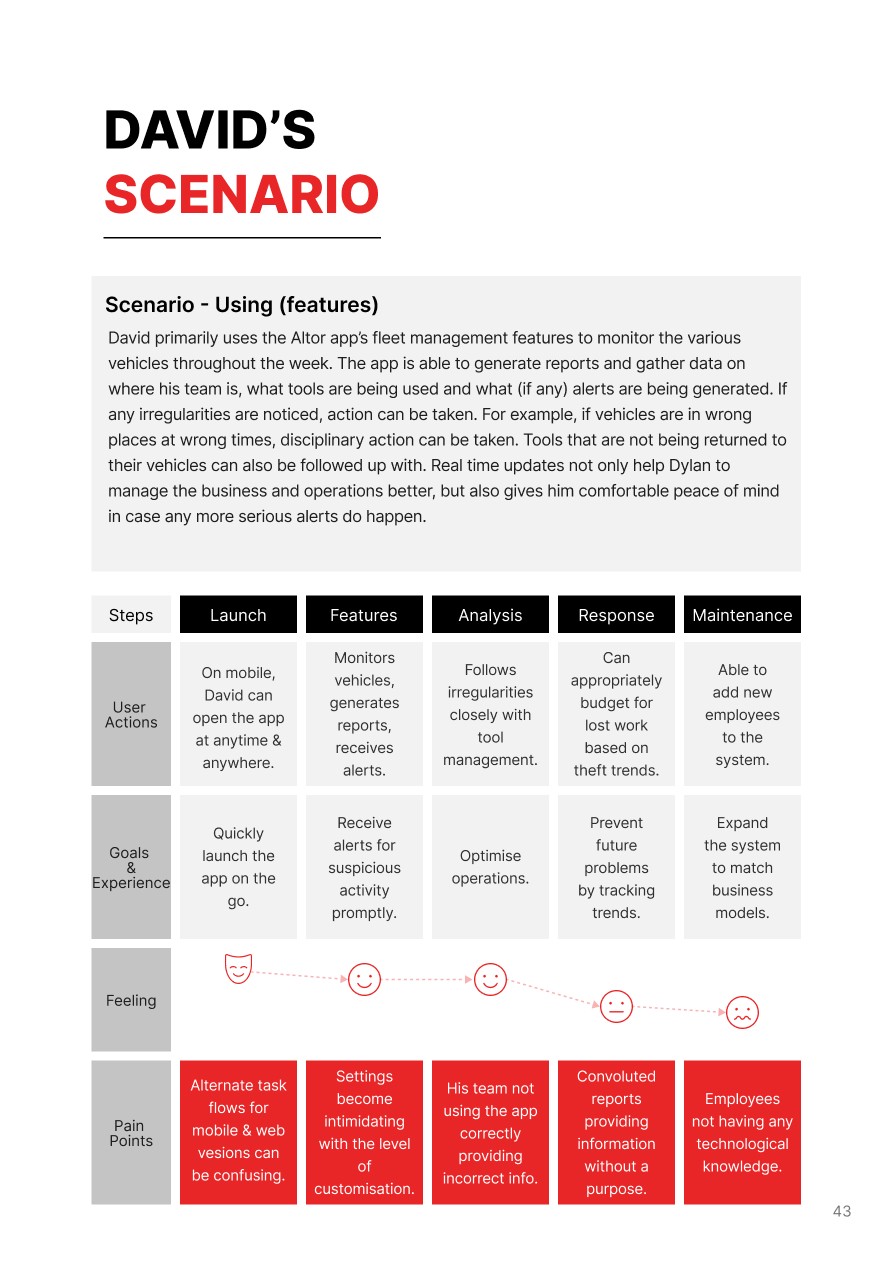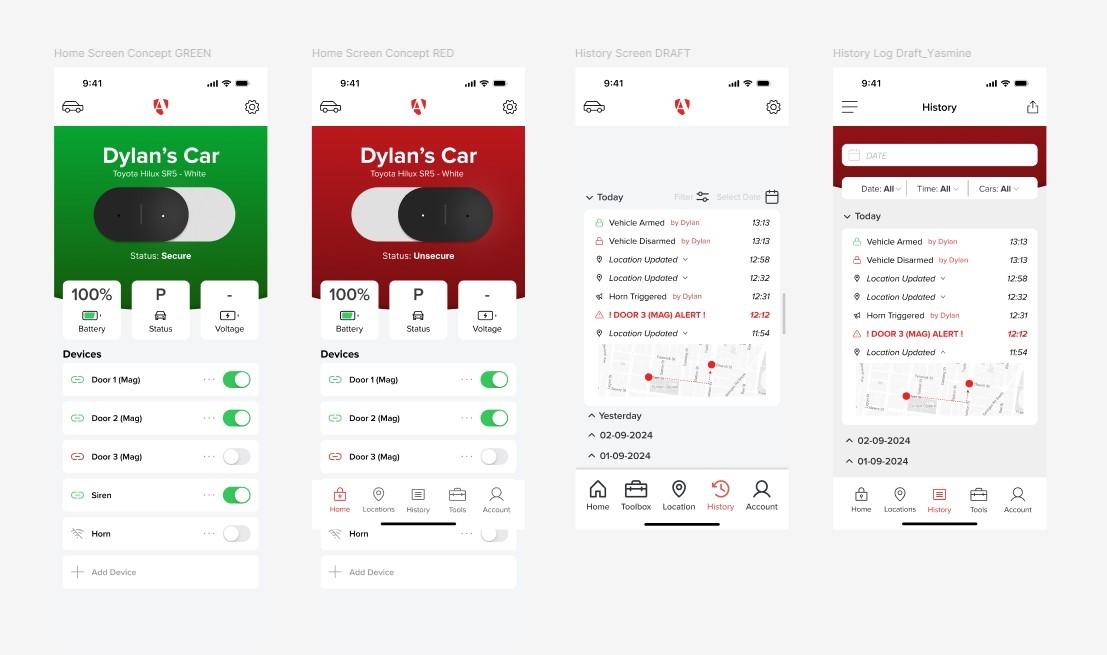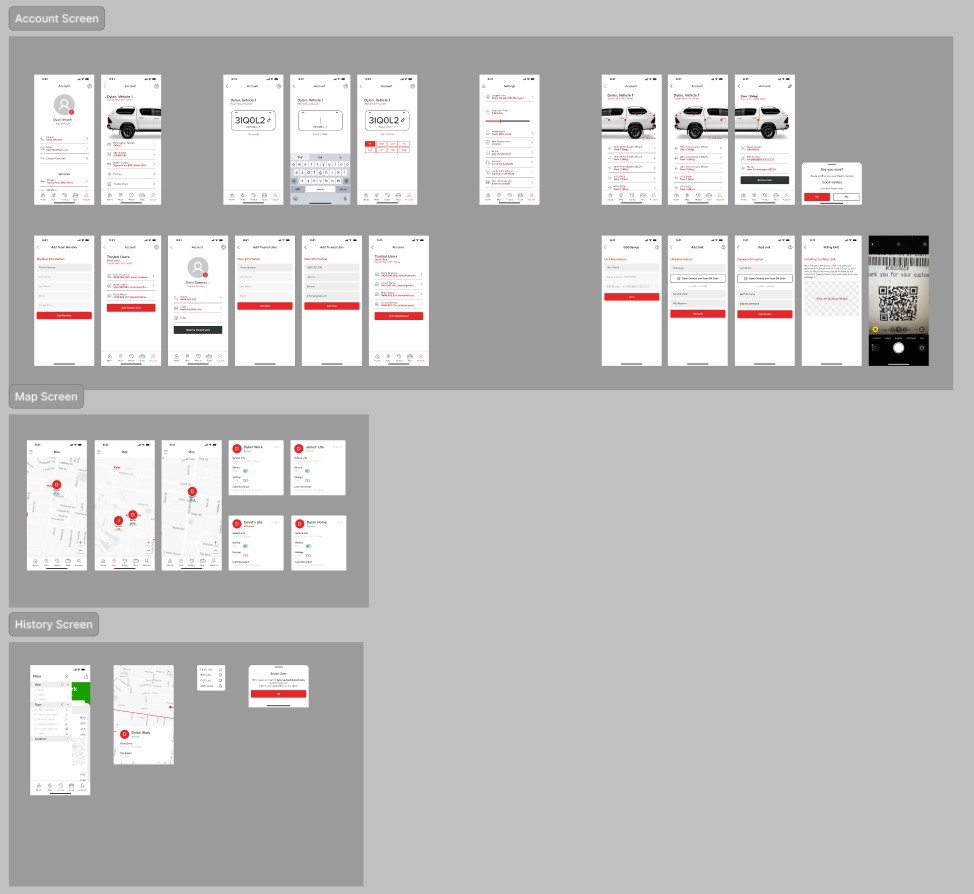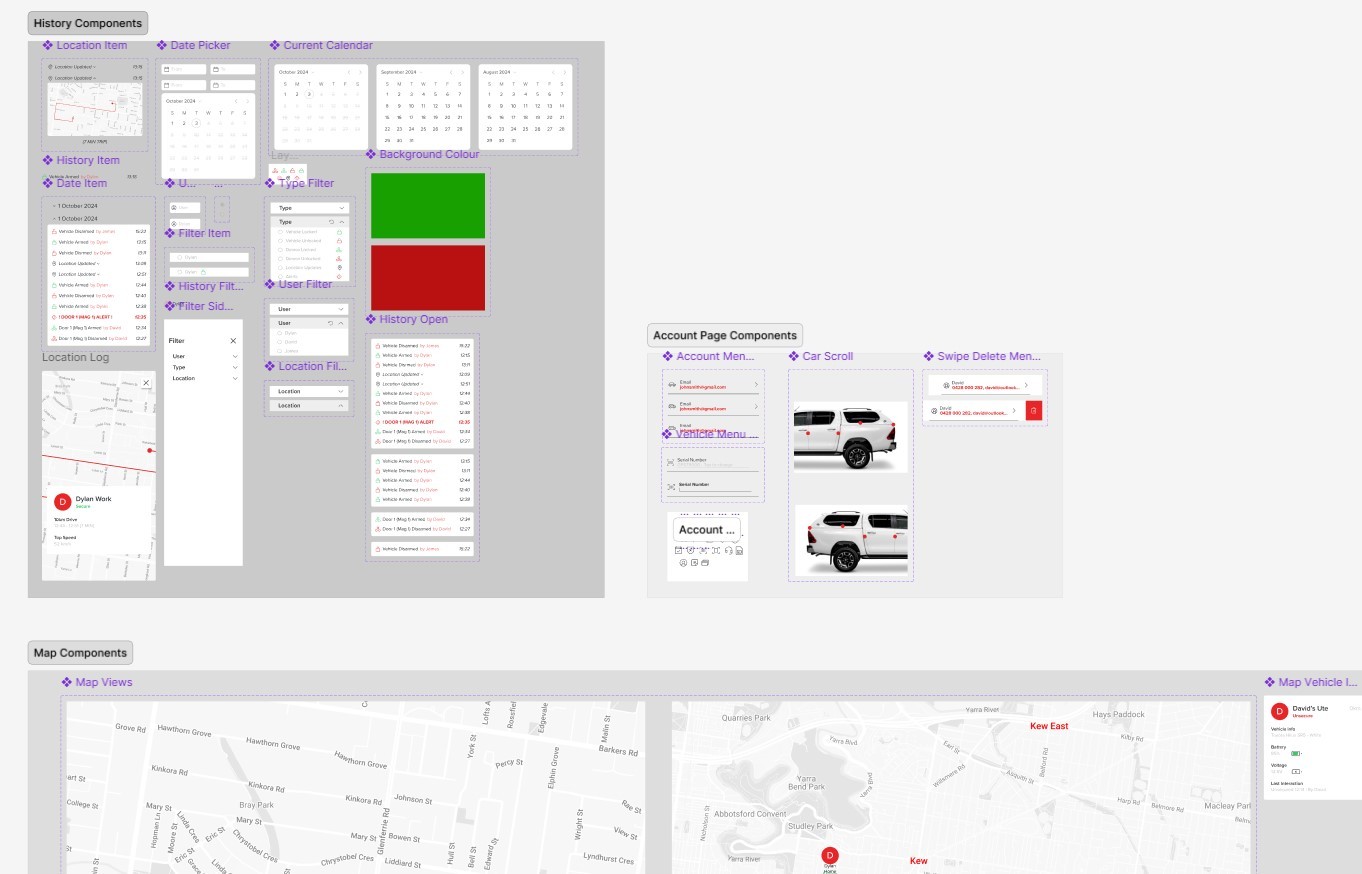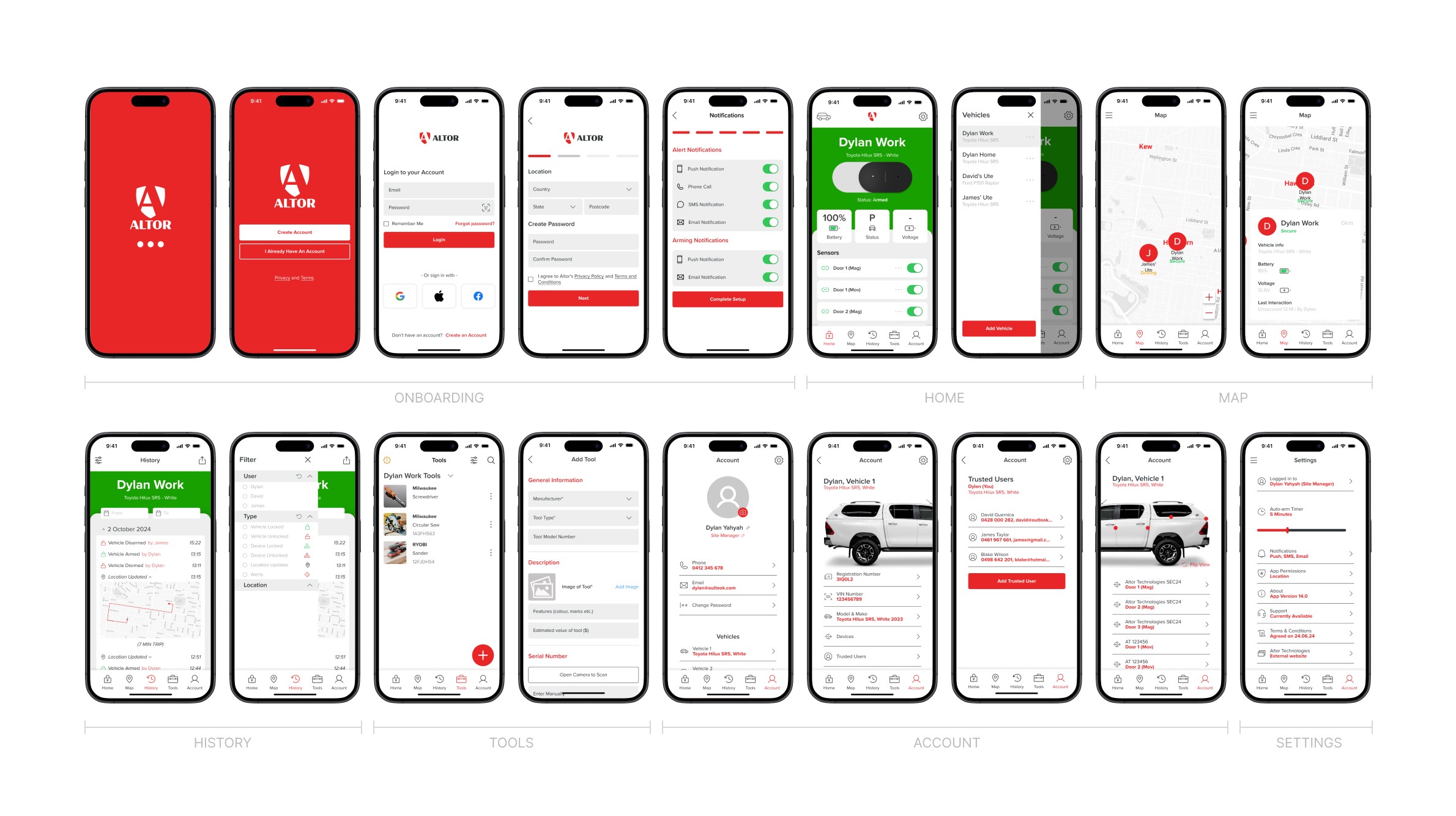Overview
Altor is a technology start up specialising in security solutions for tradies and their vehicles. Altor has developed a hardware system that provides real-time tracking, remote control capabilities, and comprehensive monitoring for vehicles.
I was part of a team of six that worked to design a mobile application prototype to accompany their security device, over the course of 12 weeks.
Project Aims
Provide a seamless experience for the user in an application that still caters to the diverse functionality of Altor’s product.
Optimise the onboarding experience for the user, keeping it concise and explicit.
Construct a design that supports Altor’s future developments.
My Roles
Prototyping
Journey Mapping
User Research
The Problem
Theft of tools is a significant concern for tradies across Australia, directly impacting their livelihood and ability to work efficiently.
Typical factory security systems in vehicles don't cover external canopies, which are fitted after purchase - and for many tradies, this is where their livelihoods are housed.
Tool theft not only causes thousands of dollars in losses, but creates delays and lost income in the time it takes to replace them.
The CSA suggests that 17% of the increase of theft offenses is driven by cost-of-living pressures.
"Over $30M worth of hand and power tools have been stolen from Victorian tradies in 2023."
- Crime Statistics Agency
out of 181,665 total theft offences were motor vehicle related.
(in the 12 months prior to March 2024, Crime Statistics Agency)
Research Insights
Research consisted of gathering secondary online research, analysing competitor case studies, conducting interviews and focus groups and performing a thematic analysis to form key insights.
Case studies revealed that the market housed many security solutions, however, they tended to only focus on one key function. Apps such as Milwaukee One Key focused on solely tool inventory, whereas Geotab focused predominantly on vehicle monitoring and tracking, for fleet management purposes. It confirmed Altor's strength in their concept, and encouraged us to explore out-of-scope avenues such as adding a tool inventory functionality - simple to design for, but bringing immense value and solidifying Altor as a holistic security solution.
Focus groups were conducted with those who had already been using Altor's existing rudimentary app whilst interviews were conducted with other tradies from a different disciplines who had not been exposed to Altor's app to gain a broad range of perspectives.
The Importance of Detailed Reporting
Participants highly emphasised the need for detailed reports and comprehensive data collection to help prevent and manage theft. Critical data types included: tool inventory, location tracking, timestamps, and compatibility with police and insurance reporting.
Function Over Form
With the nature of trades work being dynamic and time-sensitive, it was imperative that users can do what they need to do without delay.
Team Access and Permissions
The collaborative nature of trades work, whether it be between a qualified tradie and their apprentice, or a site manager and their fleet, user permissions and flexibility is needed in this area.
Customisable Alerts & Settings
Various disciplines have different workflows, and combined with the modular nature of Altor's hardware, users need to make the app work for them. Moreover, alerts need to be effective, and thus personalised to what works best for the user.
